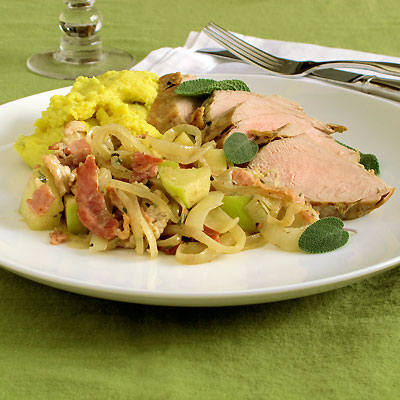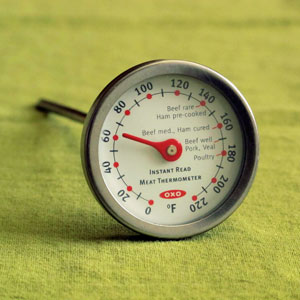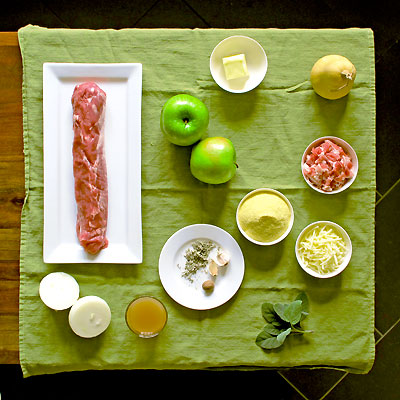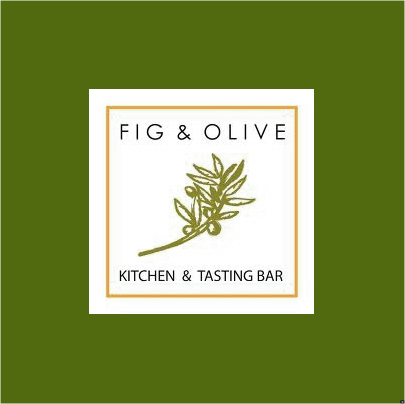
Pork tenderloin is like the piggy version of filet mignon. It’s basically the same part of the beast. It is one of the leanest cuts of meat out there. Which is a great argument in its favor. It is also very versatile, easy to cook and easy to eat. There are no bones and essentially no fat. These facts as well as its relatively low price have made it popular.
But like a beef filet, it’s not the most flavorful cut. Compared to pork butt or beef rib eye the tenderloins are rather, well… bland.
But bland can be an opportunity if looked at in the right light. Because the tenderloin has a terrific soft texture. They are pretty to look at, especially for picky eaters and those who don’t really want to know what they are eating. That’s because they lack fat.
The lack of fat means cooking can be tricky with tenderloin. I have seen some pretty dry specimens in my day. I spent a lot of years avoiding the tenderloin of both the cow and the pig. But as the years go by, many of us need to watch our fat intake. So we need to make compromises every once in a while. The old axiom of fat equals flavor remains true. But fat isn’t the only thing with flavor in this world.
This Roasted Pork Tenderloin with Apple-Bacon Compote & Butternut Squash Polenta is a perfect example. Plenty of flavor on the plate. But getting big flavor will be a waste of time if the meat is cooked to death and tastes like an old shoe.
 Pet peeve #2,886,972 of mine is overcooked meat. Now I like meat pretty rare, even pork. So by overcooked, I don’t mean you have to eat it rare. But I do mean you should cook it to its proper level of done, what ever that means to you.
Pet peeve #2,886,972 of mine is overcooked meat. Now I like meat pretty rare, even pork. So by overcooked, I don’t mean you have to eat it rare. But I do mean you should cook it to its proper level of done, what ever that means to you.
There are only 2 things you need to know about cooking meat properly. First: Meat continues to cook once it has left the oven, especially very large cuts. Many people cut into a piece of meat while cooking to see if it’s done. Not only does this let the flavorful juices escape, but it also gives a false impression. If you slice in and it looks underdone, the natural reaction is to let it cook a little more. Then you hack into it again (and again) until it looks done. So you pull it from the heat and it continues to cook as it rests until it overdone and dry.
The second thing to know is– how to know when the meat is done to your liking. For this, you need an instant-read thermometer. Tuck one behind your ear like a rose while you are cooking. Not only will you look chic, but (hopefully) you’ll remember to use it. Because it is an essential tool. They are not hard to use. Simply stick the thermometer into the thickest part of the meat, away from the bones if there are any. Learn by doing it yourself and seeing what you like. Because if you pay attention only to the suggestions printed on the thermometer you will have overdone meat most times. I don’t know who writes those things, but they are usually WRONG! Especially when it comes to pork.
In the case of this pork tenderloin, pull the meat from the oven when it reads 145 degrees F. if you like it slightly pink (as I do) or 150 degrees F. If you want it cooked through, but still juicy. Because as I said it will keep cooking. The internal temp will rise between 5 and 10 degrees F. Leave the thermometer in there while it rests if you don’t believe me.
 Roasted Pork Tenderloin with Apple-Bacon Compote & Butternut Squash Polenta serves 8
Roasted Pork Tenderloin with Apple-Bacon Compote & Butternut Squash Polenta serves 8
CLICK here for a printable recipe Adapted from CIA Greystone’s Seasons in the Wine Country
- 2 c butternut squash, peeled, seeded and cut into 3/4‑inch cubes
- 3 T olive oil, divided
- salt and white pepper as needed
- 5 c chicken or vegetable stock
- 1⁄8 t freshly ground nutmeg
- 1 t rubbed dried sage
- 1 c coarsely ground yellow polenta
- 1⁄2 c fontina cheese, grated
- 1 T unsalted butter
- 24 fresh sage leaves
- 2 one-pound pork tenderloins
- 4 slices applewood-smoked bacon, cut crosswise into 1/2‑inch strips
- 2 clv garlic, peeled and thinly sliced
- 1 small onion, peeled, halved and thinly sliced
- 1 t fresh thyme leaves
- 4 tart green apples, cored and cut into 1/2‑inch cubes
- 1⁄2 apple cider
Instructions
Preheat oven to 400 degrees F. In a medium bowl toss the diced butternut squash cubes with 1 tablespoon olive oil and salt and white pepper. Lay the cubes out in a single layer on a parchment-lined baking sheet. Roast until soft and beginning to color, about 20 minutes. Let cool somewhat them puree than in a food processor until very smooth. Set aside.
In a large saucepan set over medium heat, bring the stock, 1 teaspoon salt, 1/2 teaspoon white pepper, nutmeg, and dried sage to a boil. Add the polenta, in a slow gentle stream, whisking constantly. Reduce the heat to very, very low and cook, whisking all the while until it begins to thicken, about 5 minutes.
Switch to a wooden spoon, cook, stirring the polenta from time to time until it is soft and creamy, about 20 minutes. You may need to add a few teaspoons of water if it gets too stiff. Add the butternut squash puree, cheese, and butter. Stir to blend. Taste and adjust seasoning. Set aside covered and warm. You may need to reheat it with a few teaspoons of water right before serving.
Return the oven to 400 degrees F.
Mince 8 of the fresh sage leaves. Set aside.
Bring the tenderloins to room temperature, dry them completely with paper towels.
Place a roasting rack on a baking sheet. Sean the pork well with salt and white pepper. In a large skillet set over medium heat, warm 2 tablespoons olive oil. Add the pork tenderloins one at a time and brown it well on all sides. Repeat with the second tenderloin.
Remove the pork from the skillet, and place them on the rack without touching each other. Place the rack in the center of the oven and roast until an internal temperature reaches 145 degrees F for slightly pink or 150 degrees F. for cooked through but juicy. About 25 minutes.
While the pork cooks, add the bacon to the same skillet you used for the tenderloins and cook it over medium heat, stirring frequently, until crisp. About 8 minutes. Stir in the garlic, cooking an additional minute. Add the onion, minced sage, and thyme. Cook stirring and scraping the bottom until the onion is tender. About 5 minutes. Add the apples, stirring often until softened and lightly colored, about 5 minutes.
Turn the heat to high and add the cider to deglaze the skillet. Lower the heat and reduce until the liquid thickens, about 6 minutes. Season with salt and white pepper to taste. Cover to keep warm and set aside off the heat.
Remove the pork from the oven and let it rest about 10 minutes. Cut the pork into 1/2‑inch thick slices. Arrange them over a bed of the warm butternut squash polenta and serves the apple-bacon compote on the side. Garnish with the remaining sage leaves. Serve immediately.
SERIOUS FUN FOOD
Greg Henry
Sippity Sup
Pork Tenderloin


Great post Greg. Love the fresh-sounding sauce too.
LL
agree with you here my friend. You know me and salmon, not a match made in heaven, but I actually like the char, its a bit less fishy to me. Lovely presentation, as always. — S
I love salmon but I never tasted arctic char, I will look for it in the markets and then cook this great recipe. Thank you for sharing!
I agree — Great alternative to salmon. 🙂 And this looks like a simple, subtle recipe that would bring out it’s natural flavors!
[K]
I love arctic char and serve it whenever I can find it — will definitely bookmark this recipe since I cook a lot of fish and am always looking for new ways to prepare it!!
You would have found the Seafood Summit interesting (last week at Bluewater Grill in OC). The main speaker was the VP of Procurement from Santa Monica Seafood Co. which is working with the Monterey Bay Aquarium on a comprehensive guide specifically for food service establishments. They visit and rate all fish farms, encourage better practices, dispelled beliefs based on decades-old information, and want people to know that responsible aquaculture takes the pressure off wild species, etc. Yes, its a very complex issue and Arctic Char is a lovely substitute for salmon 🙂
I applaud your philosophy on sustainable seafood! I live in Florida and always try to lean towards local fish. It’s usually fresher, and fresher tastes better. At $25/pound, Chilean sea bass doesn’t make it to my table very often. After all I’ve read, I will never knowingly buy farm-raised salmon again. I grab wild salmon when I can get it, but char is a great substitute. In fact, it’s become one of my husband’s favorites. Love your recipe!
and not eat any fish, ha ha.
Wow, that plate looks so good. If it tastes anywhere near as good as it looks I’m there! I’m not a huge fan of fish as a rule but that looks inviting.
I remember when whole foods first started their artic char campaign about two years ago, although I haven’t seen it there much since. I wonder what happened…
I’m all about sustainable eating, so I am ALL over this! I’m also a huge fan of this sweet and sour business. Satisfies all the taste buds.
I guess we’re on the same page this week.
I’ve fallen off the food blog-wagon for a while, and just happened to look at your blog today, and, oddly enough, my boyfriend and I (who still eat awesome despite the lack of blog posts) just “discovered” arctic char earlier this week!
Anyways, just wanted to share the coincidence.
Lovely post as always.
I am also a huge fan of Chilean Sea Bass. I will only eat mild tasting fish and it is definitely that. However, I will now give Artic Char a try. I like the flavors in your recipe and imagine they will do well with this type of fish.